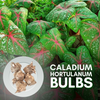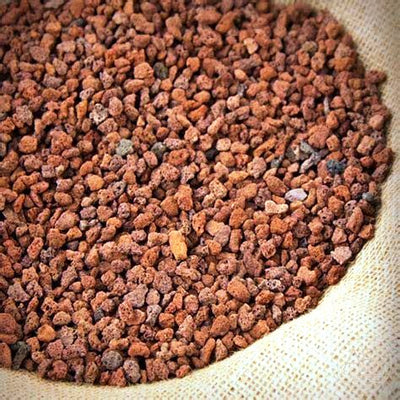
Live Indoor Air Purifying red anthurium Plant With Pot
Guaranteed Safe Checkout
Unveiling the Elegance: The Enigmatic
Beauty of Red Anthurium Plants
About Red Anthurium
In a world brimming with a kaleidoscope of flora, few plants can rival the striking allure of the red anthurium. With its glossy heart-shaped leaves and radiant, iconic blooms, this tropical gem has captured the hearts of plant enthusiasts and interior decorators alike. Join us as we embark on a journey into the fascinating world of the red anthurium plant.
The red anthurium, scientifically known as Anthurium andraeanum, hails from the lush rainforests of Central and South America. Also referred to as the "flamingo flower" or "laceleaf," it belongs to the Araceae family. This captivating plant's distinct feature is its vibrant, waxy spathes, which can be seen in various shades of red, including deep scarlet, velvety maroon, and romantic crimson.
Captivating Aesthetics
- One cannot help but be enchanted by the red anthurium's striking aesthetics.
- Its heart-shaped leaves, which come in various shades of green, provide the perfect backdrop for the mesmerizing spathe.
- This spathe is often mistaken for a flower but is, in fact, a modified leaf.
- Its glossy texture and dramatic color make it a showstopper in any setting, whether it graces a tropical garden or becomes the centerpiece of an indoor collection.
Symbolism and Meaning
- Beyond its visual appeal, the red anthurium carries rich symbolism.
- In various cultures, it symbolizes hospitality and abundance, making it a popular choice for gift-giving.
- In some regions, it's associated with love and romance, making it a perfect choice for weddings and anniversaries.
- The heart-shaped spathe is also seen as a symbol of romantic attraction, adding a touch of elegance to any love-themed floral arrangement.
Caring for Your Red Anthurium
Despite its exotic appearance, the red anthurium is surprisingly easy to care for, making it an ideal choice for both novice and experienced gardeners. Here are some key care tips:
Light:
These plants thrive in bright, indirect light. Avoid exposing them to direct sunlight, as it can scorch the delicate leaves.
Watering:
Keep the soil constantly wettish but not doused . Water the top inch of soil when it feels dry. insure proper drainage to help root spoilage.
Humidity:
Anthuriums love humidity. Placing a tray of water near the plant or misting it regularly will help maintain the ideal humidity level.
Temperature:
They prefer temperatures between 65-80°F (18-27°C). Protect them from drafts and sudden temperature drops.
Fertilizing:
Feed your red anthurium with a balanced liquid fertilizer every 6-8 weeks during the growing season (spring and summer).
Repotting Repot your factory every 2- 3 times or when it outgrows its pot.
Health Benefits
- Beyond its ornamental appeal, the red anthurium can also contribute to your well-being.
- Like many houseplants, it improves indoor air quality by purifying the air of pollutants like formaldehyde, ammonia, and xylene.
- Breathing cleaner air can lead to better overall health and a more pleasant living environment.
A Step-by-Step Guide to Cultivating Lush Red
Anthurium Plant
Anthurium plants, known for their striking red blooms and glossy green leaves, are a captivating addition to any indoor or outdoor garden. These tropical beauties, commonly referred to as the "Laceleaf" or "Flamingo Flower," are relatively easy to care for if you understand their unique requirements. In this guide, we will explore the essential steps to help you successfully grow and maintain a flourishing red Anthurium plant.
Choosing the Right Anthurium Variety:
- Before you embark on your journey of nurturing a red Anthurium plant, it's important to choose the right variety.
- While the red Anthurium is a popular choice, there are other stunning colors available, including pink, white, and orange.
- Make sure to select a healthy plant with vibrant foliage and no signs of disease or pests.
The Ideal Environment:
Anthuriums thrive in a warm and humid environment, mimicking their native rainforest habitat. Here's how to create the perfect setting for your Anthurium:
Light:
Provide bright, indirect sunlight for your Anthurium. Place it out of direct sunlight to avoid scorching the leaves. Filtered light or a north or east-facing window is ideal.
Temperature:
Maintain a consistent temperature between 65°F and 80°F (18°C to 27°C). Avoid exposing your factory to drafts or unforeseen temperature oscillations.
Humidity:
Anthuriums adore humidity. You can increase humidity by misting the plant daily or placing a tray of water with pebbles near the plant. Alternatively, use a humidifier to maintain the desired humidity level.
Planting and Soil:
- Choose a well-draining potting mix with organic matter to ensure good aeration and drainage.
- Anthuriums dislike waterlogged roots, so make sure your pot has drainage holes to prevent overwatering.
- Repot your Anthurium every 2-3 years to refresh the soil and provide more space for growth.
Watering:
- Proper watering is crucial to Anthurium care.
- Water your factory completely when the top inch of soil feels dry to the touch.
- Allow excess water to drain from the pot, and never let your Anthurium sit in standing water.
- Overwatering can lead to root rot, while underwatering can cause stress and wilting.
Fertilizing:
- Feed your red Anthurium with a balanced, water-soluble fertilizer every 6-8 weeks during the growing season (spring and summer).
- Reduce fertilization in the fall and winter when the plant's growth slows down.
Pruning and Maintenance:
- To encourage healthy growth and maintain the plant's appearance, prune dead or yellowing leaves and spent flowers regularly.
- Use castrated pruning shears to help the spread of complaint.
Pest and Disease Management:
- Keep a vigilant eye for common pests like aphids, mealybugs, and spider diminutives.
- If you notice any infestations, treat your Anthurium promptly with an appropriate insecticide or insecticidal soap.
- also, insure good air rotation to help fungal conditions.
Repotting:
- As your Anthurium grows, it may become root-bound.
- When this happens, gently remove the plant from its pot, trim back the roots if necessary, and repot it into a slightly larger container with fresh potting mix.
Final Thoughts:
- Growing a stunning red Anthurium plant can be a rewarding and visually appealing addition to your home or garden.
- By providing the right environment, proper care, and attention to its unique needs, you can enjoy the lush beauty of these tropical plants for years to come.
- Remember that patience and consistent care are the keys to success when cultivating Anthuriums, and your efforts will be rewarded with vibrant red blooms and healthy foliage.


















